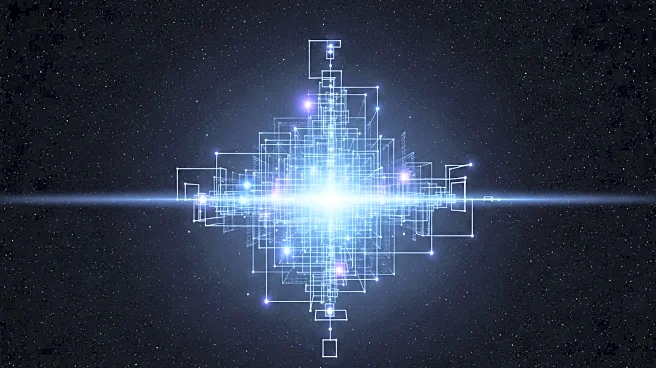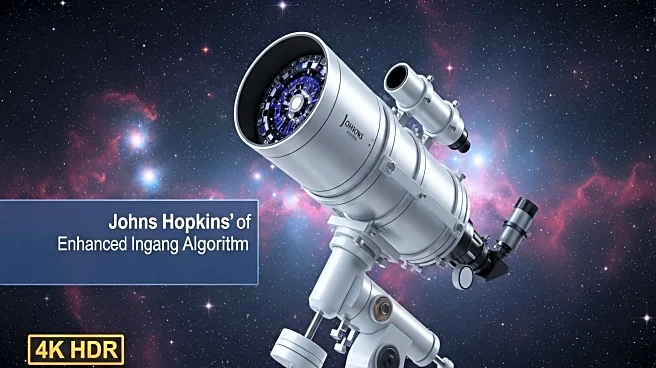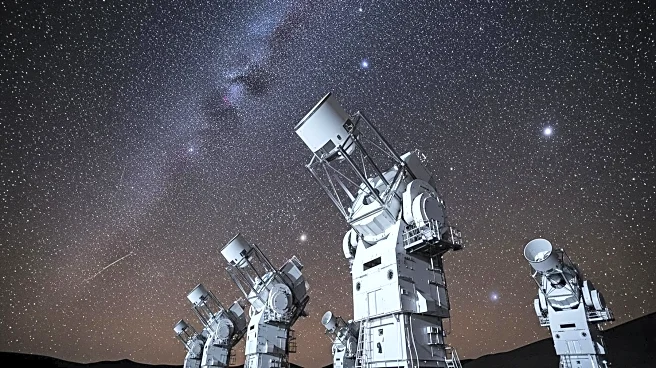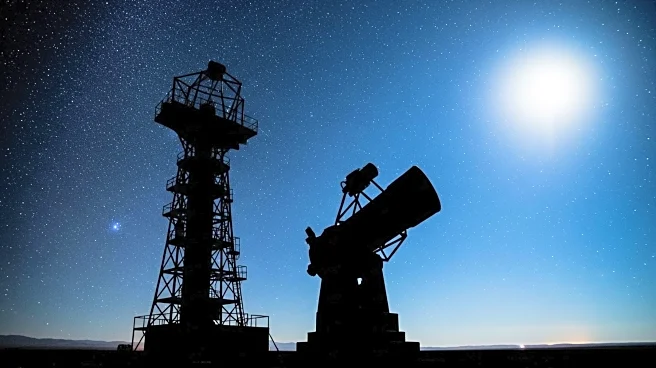What's Happening?
A new algorithm developed by Johns Hopkins mathematician Yashil Sukurdeep, known as 'Image MM', has been successfully tested on the Subaru Telescope in Hawaii. This algorithm aims to improve the quality of images captured by ground-based telescopes by removing atmospheric distortions. The algorithm uses the Majorization–Minimization method to model how light travels through the atmosphere, allowing for sharper images. The next application of this algorithm will be on the Vera C. Rubin Observatory, which is set to begin operations later this year. The Rubin Observatory's wide field of view will benefit from this enhancement, particularly in mapping dark matter distribution through weak gravitational lensing.
Why It's Important?
The development of the Image MM algorithm is significant for astronomical research as it enhances the capabilities of ground-based telescopes, which are typically limited by atmospheric distortions. This improvement allows for more accurate observations and measurements, particularly in the study of dark matter and weak gravitational lensing. While space telescopes like Hubble and James Webb offer superior image quality, their narrow fields of view limit their observational scope. The Rubin Observatory, with its wide field of view, will gain a competitive edge in astronomical research, potentially leading to new discoveries and insights into the universe.
What's Next?
The application of the Image MM algorithm to the Rubin Observatory is expected to commence as the observatory begins its science operations. This advancement may prompt further developments in image processing techniques for ground-based telescopes, enhancing their role in astronomical research. The success of this algorithm could lead to its adoption by other observatories, improving the overall quality of ground-based astronomical data and potentially influencing future telescope designs.












